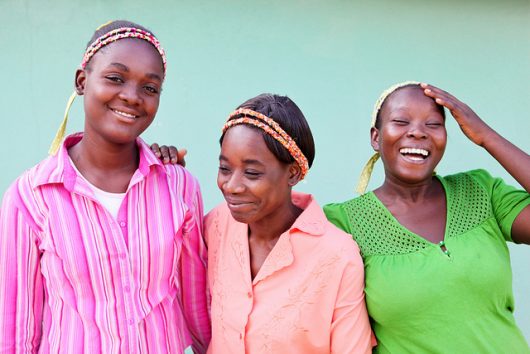Health and Recovery of a Nation: Girls’ Education in Haiti

On Jan. 12, 2010, a 7.0-magnitude earthquake shook the island nation of Haiti. In the aftermath, 200,000 people were left dead and 1.5 million homeless. Homes, hospitals and government buildings crumbled, leaving communities scrambling for essential resources and shelter.
Volunteers and relief organizations across the globe swarmed with aid. Most aid groups from the earthquake have since left and the rebuilding process now lies in the hands of Haitian community members and scholars. Eight years later, many still live without basic services (clean water, plumbing) or health resources.
Citizens agree that girls’ education in Haiti and community development need to improve before the country can truly recover. A recent study using World Bank data has listed Haiti as a nation significantly below global enrollment rates for girls in schools.
World Bank data from 2014 states 15 percent of girls 12 to 18 are no longer in school, compared to 11 percent for boys. Only 45 percent of Haitian women over 15 are literate, compared to 53 percent for men over 15 years old. For effective redevelopment, the trends for girls’ education in Haiti are something both locals and researchers agree need to change.
In response to lower female community involvement and enrollment in schools, many research and educational programs focused on girls’ education in Haiti have started gaining popularity throughout the island nation.
Jayne Engle, a doctor of participatory community development in post-earthquake Haiti, conducted a post-earthquake study focused on effective and sustainable community development in Bellevue-La-Montagne, a small community near Port-au-Prince. She prioritized the rebuilding process by the following “levers of transformation:”
- Education (for all)
- Place identity, networks and research
- Social entrepreneurship and social innovation
- State-society trust and accountability
Engle worked extensively with community leaders to develop educational programs concerning social entrepreneurship, healthcare, environmental stewardship, community agriculture, planning and construction. As a result, the community has made significant progress in its infrastructural recovery and social equity. Engle believes her framework could be effective on a nationwide scale.
The Days for Girls (DfG) International program teaches Haitian seamstresses to produce DfG hygiene kits for distribution to women across Haiti. Each kit contains valuable information concerning female hygiene as well as safe, clean female hygiene products. During the two-month trial program, 90 percent of participants agreed the kits were easy to use and clean.
The Haitian Health Foundation’s (HHF) GenNext program combines a youth soccer league with “female sexual reproduction health” classes taught by nurse educators. The league is for girls only, as well as the classes. A three-year study of league participants compared to peers not in the soccer league showed significantly fewer pregnancies for league participants.
These programs and others continue to educate a generation of Haitian women eager to propel their
nation from poverty and hardship. As these efforts and more continue, girls’ education in Haiti is sure to only improve over the coming years.
– Charles Metz
Photo: Flickr
